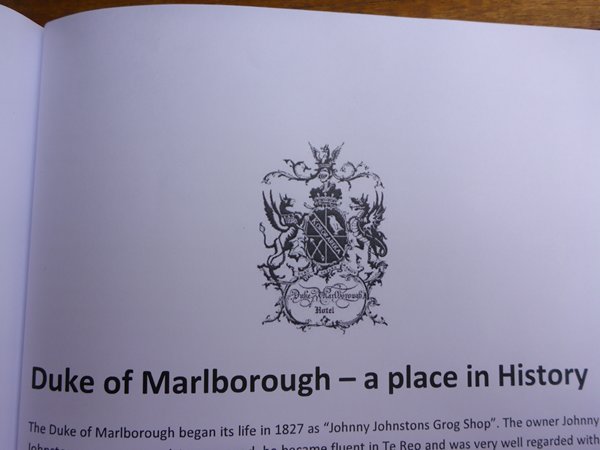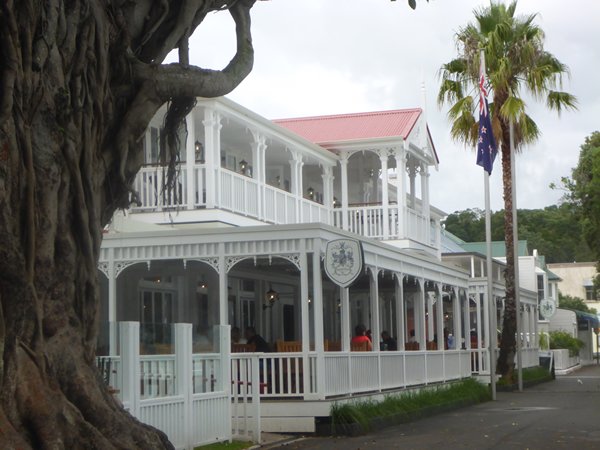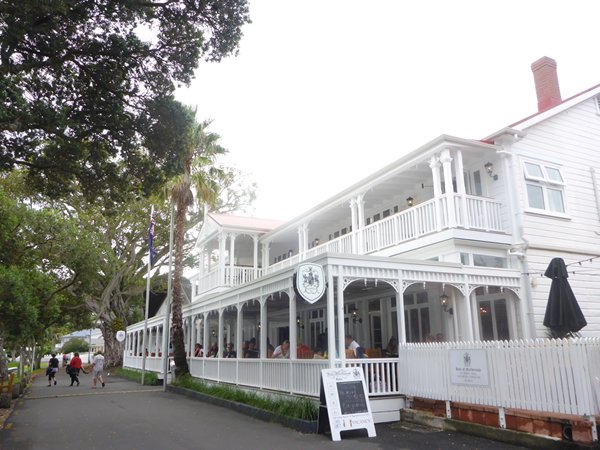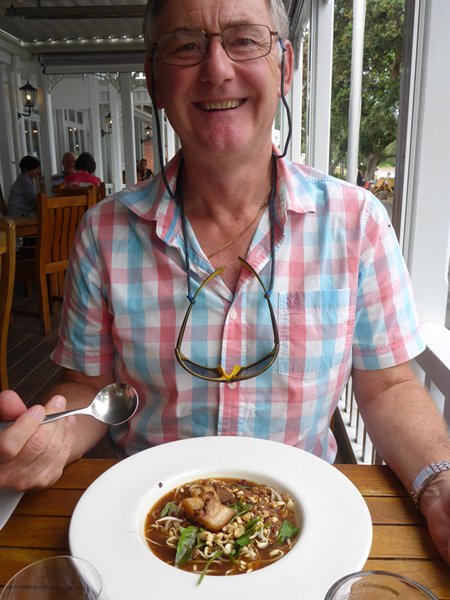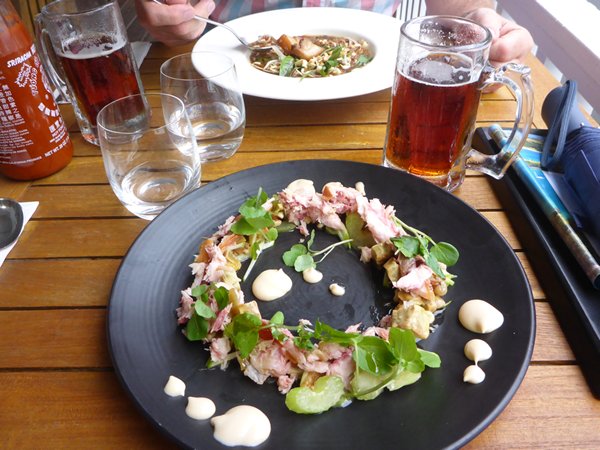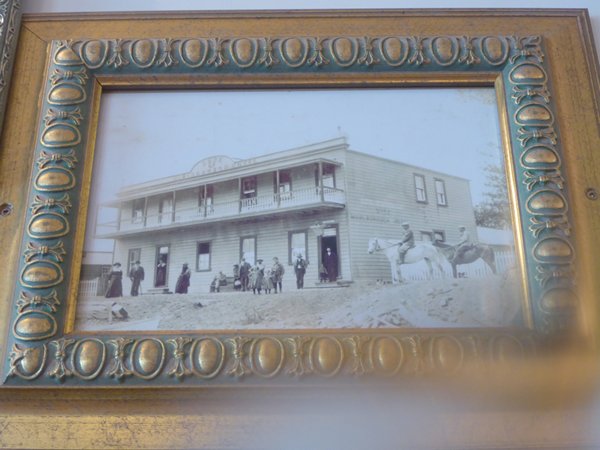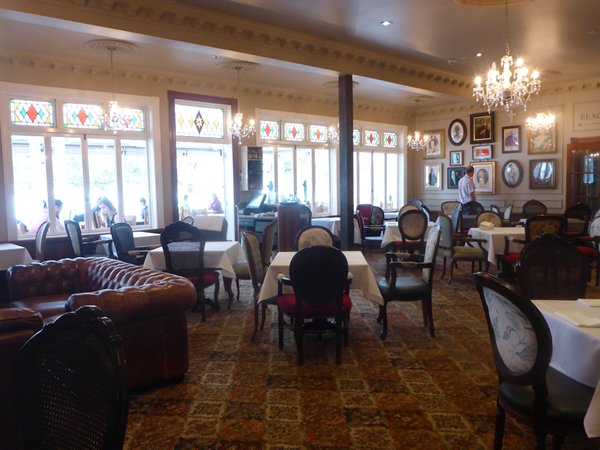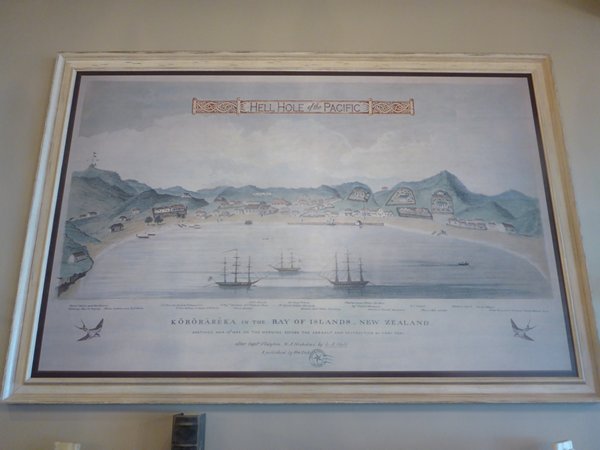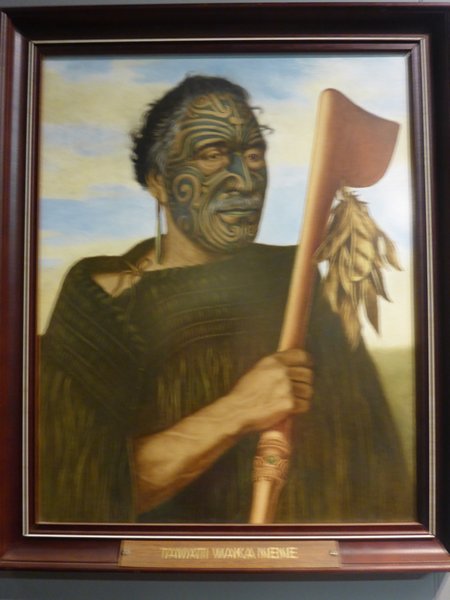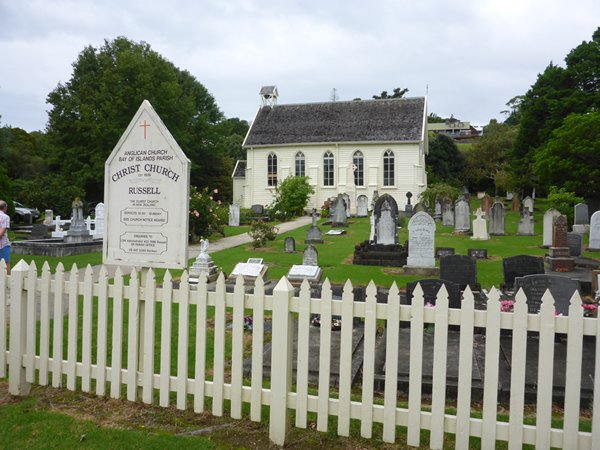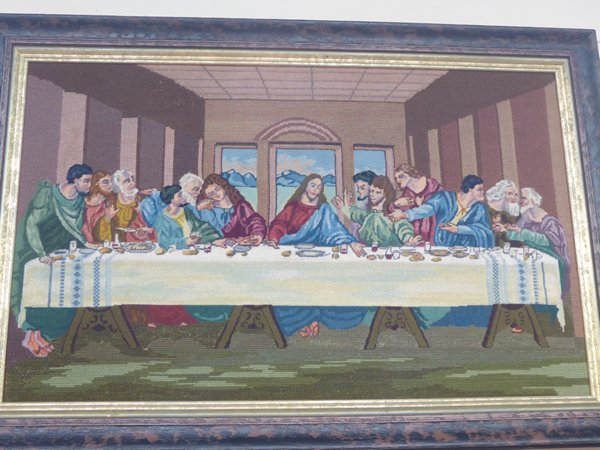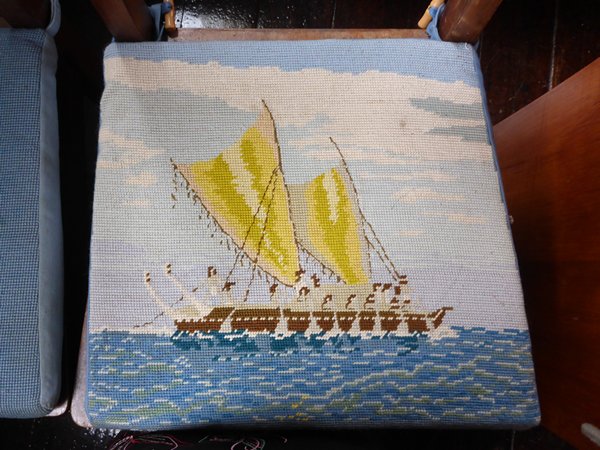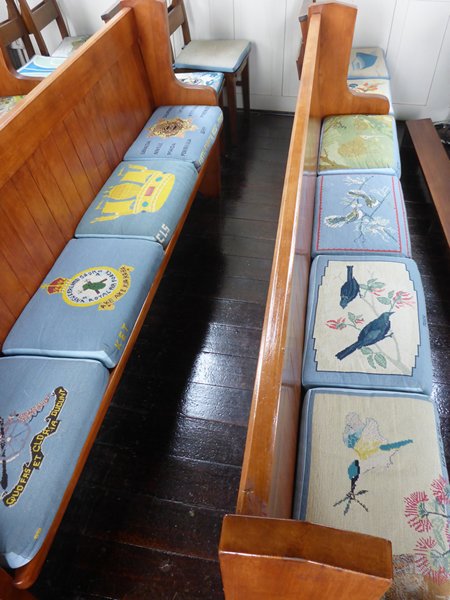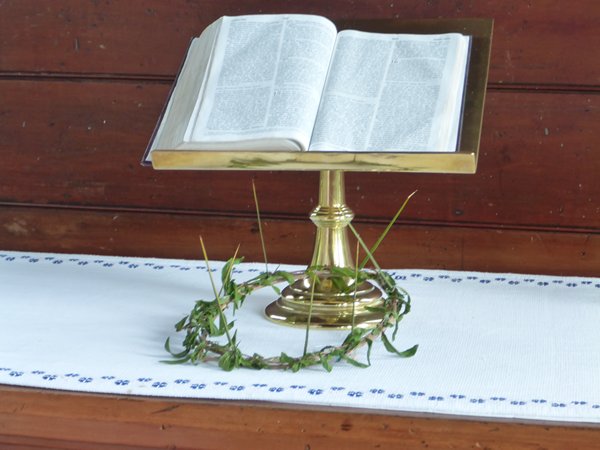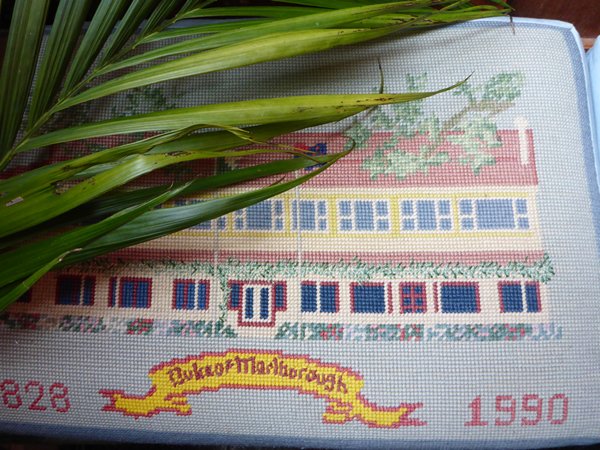Kororareka in Maori and Russell in Pakeha English

|
Kororareka (Sweet Penguin) Hell Hole of the Pacific Russell A Maori legend tells of a chief, fallen in battle, asking for some flesh of the sweet penguin to speed his healing progress, hence the first name of this small town on the sheltered main shoreline in The Bay of (144) Islands on the north east coast of the North Island. Chief Tamati Waka Nene saw all the painful birth pangs of early pakeha life since the area was his home throughout his life from 1780 to 1871. He welcomed the early whaling ships, the first settlers, the Wesleyan missionaries, the French Catholic contingent and the British government representatives seeking to claim this New land for the far away young and beautiful Queen Victoria. He helped to teach Johnny Johnson, an intelligent ex-convict, the Maori language and thus forged a friendship that lasted for life. In 1827 Johnny bought an alehouse on the shorefront and called it Johnny Johnson’s Grog Shop. Sometimes the excellent deepwater anchorage off the shore infront of the pub was temporary home to of up to fifty whaling ships that had been at sea for upwards of a year. Well you can imagine the pent up emotions of the young male crew can’t you. Johnny did too and fed, watered and womaned the sailors as much as their hearts could want, or rather their pockets could afford. The result was inevitable and earned this place the second name in the title for a little over ten years. The disreputable reputation spread far and wide, attracting more debauchery and prostitution until, young and ambitious Captain William Hobson (who gave his name to Mt Hobson on Great Barrier Island, remember me wondering where it got its name) arrived as Lieutenant Governor in 1839 and with undue haste arranged the writing of the Treaty of Waitangi, just over the water from Russell, which effectively ‘preserved’ the rights of the Maori while commandeering land ownership for the settlers and British Government. Johnny of the Grog Shop helped translate the treaty into Maori and was uncomfortable that both versions meant quite different things. He was right, the Treaty is still a bone of contention between the Maoris and NZ government. Johnny’s good friend Chief Tamati Waka Nene supported the Treaty and fought with the British troops and Colonial Forces against Hone Heke who maybe had more vision because he could see how Maori entitlement was under threat. He expressed his fears for their future by felling the Flagstaff on the hill beside Russell three times after the capital was established. They were defeated, so then Tamaki acted as mediator for them, he sounds like a born peacemaker and diplomat and was recognised as such at the time becoming Maori adviser to the new government. By this time Johnny was thinking he should roll on the respectable for his alehouse so he chose to name it after the wealthiest man in the world at the time, The Duke of Marlborough and Russell started its uneasy transition to respectability while the politics moved on rapidly. Remember when we visited James and Jane Clendon’s home at Rawene when we were touring the north-west coast and the Hokianga Harbour? Well James had arrived in Russell in 1832 and set up a trading station servicing shipping. He was a public spirited man and took on the role of JP and Magistrate, he must have had his work cut out in those rough and ready days. He was promoted to US Consul in NZ under Captain Hobson, who with the Treaty signed by at least a few of the Maori chiefs, established the first government. Hobson needed a base for the government and commandeered James’ home where he lived with his first wife Sarah and their children on a promontory overlooking the water in Okiato. In exchange James was given a raw deal, a small sum of money and a useless section mostly of mangrove swamp near Auckland. With all that fine land around I wondered why he was being so mean, maybe they had a falling out. Within months of James and his family being booted out of their home the seat of government was moved to Auckland and quite why James didn’t take back his home I am not sure, the ink of the sale could barely have dried on the paper, but on May day in 1842 his beautiful home was burned to the ground and that was that. It could have been a victim of the battle that took place against Hone Heke after the signing. James needed a home so he built a pretty little cottage next to the Pompallier Catholic Mission on the shorefront just down from the Marlborough before leaving the area entirely and starting fresh in Rawene. It is now the coffee, croissant and culture café and shop through which we passed to visit the Mission and later enjoy a coffee and pastry overlooking the water. Charles Darwin visited the town in its wild time and felt the residents were in need of some ecclesiastical and spiritual support so he donated a generous sum to the building of Christ Church, NZ’s oldest church. James first wife Sarah Clendon and two of her grownup children are buried in there along with Tamati Waka Nene and three generations of ‘Ford’ family members, I wonder if they are from Rob’s Mom’s ancestral line. One day we will trace our family trees thoroughly and find out. The friendly fusion between the resident Maoris and the incoming foreigners is evident in numerous ways and recorded on the beautiful hassocks in the church where the congregation showed multi-coloured faces raised in faith to the preacher from the day of its consecration. I will let the photos tell the story. Notice the presence of Mary Magdalene on the right hand side of Jesus at the Last Supper long before the Vatican acknowledged her significance in 2016. Another building where French Catholic churchmen worked hard to satiate the Maoris thirst for the new faith was in the Pompallier Mission, a printing press factory where Marist monks from Lyon worked tirelessly producing bibles in the Maori language for free distribution far and wide. These intelligent tribespeople quickly learned to read their own language and I would have loved to have been around to witness this revolution in their culture and help in the teaching process. A sweet irony was that they needed the copious amounts of urine from the alehouses for the tanning process, to soften the leather used for the book covers. Lydia showed us around and as we had arrived between the routine tour times we had her wealth of knowledge and humour to ourselves. Mummified rats found around the walls and under the floors of the building when it was restored to its original purpose a few years ago attested to the affluence of the two families who owned the building and converted it into a house for a number of years between 1879 and 1943. One rat was found nestled amidst chewed scraps of the Financial Times, an entrepreneur rat, and another was found under the kitchen floor still wearing a thick layer of body fat, a fat rat, either way the missions only permanent residents as they now rest behind glass in the museum on the top floor. Johnny’s fortunes were going from good to great. After the signing he obtained the first liquor licence in NZ, which is framed and hangs on the bar wall, and after over a decade of ‘colourful’ business the hotel was finally legal. It took a few years for Russell to fully settle down because moving the capital away caused a local decline in business and in the resulting battle of Kororareka in 1845 the hotel burned down. Johnny quickly rebuilt it but both the new one and the next also succumbed to flames. Today’s grand building was once the accommodation block for the Cable Station at Doubtless Bay (that exquisite bay where we camped with the family last April). How well do New Zealanders move buildings. This one was barged into place in 1932. We checked into our motel room for the night and walked in to the town for the evening. Sitting under the starting room above the information kiosk at the end of the pier we were on the start line for the traditional Wednesday evening handicap sailing race with 8 entrants of all shapes and sizes including a Dragon class (elegant lines and swift in the right hands) and a Flying Fifteen (stable and as it was once the smallest keel boat and possibly still is, it should be uncapsizable). Fingers in our ears for the guns it was familiar fun to watch the jostling for best start positions. One ambitious helmsman ordered the raising of the spinnaker for the down-wind start, a gust teased him into a broach so from our vantage point it seemed he must ram a big moored motor boat. In sorting himself out he crossed the line last. While this was going on the R Tucker Thompson Brigantine arrived after a day exploring the islands with her fortunate crew. The punters dropped off at the quay the young lad and lady one to the bowsprit and the lass up the mast to stow the sails while the skipper reversed out and took his vessel to her nocturnal mooring. While lying in bed at our nocturnal mooring we listened to the cries of a morepork couple and the kiwi lookalike, a weka. The drive back the next day down the Russell coast road was pure magic. We stopped a couple of times just to enjoy a stationary view of the surroundings. I’ll let the photos speak for themselves. There are two files of photos.
|
